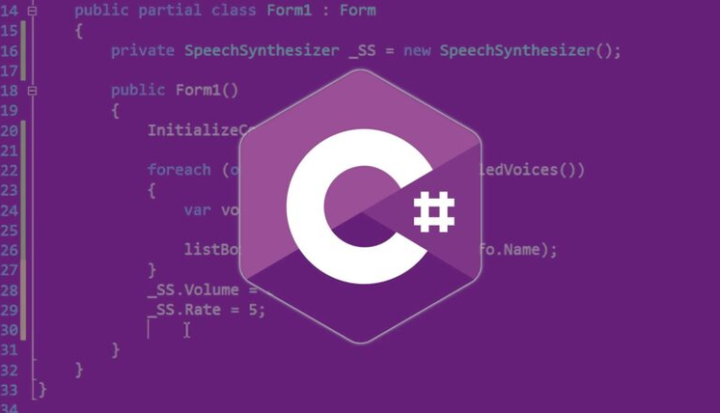Programming languages: C#
The C programming language has haunted developers since its inception. On the one hand, it was a system programming language close to machine programming. On the other hand, the programming world at that time was shaken by new paradigms and technologies associated with the advent of the era of object-oriented programming (OOP). And its capabilities in C were clearly not enough, despite the appearance of the first versions of C ++ from Borland. By the way, there were also reverse attempts to simplify C even more: the Sphinx C– project is still popular, where the entire RTL part was thrown out of the programs.
But the world was waiting for more, so all these C ++, C builder, C # (C-sharp) appeared. The latter was released back in 2001 and has already reached the 4th version. Like other similar languages, it borrowed syntax from C and Java – by then, programmers would not have understood significant changes. However, like C++, C-sharp is not a direct descendant of C – they are just similar. As with Java, which can only be called a cousin of this language. Some programmers are simply sure that C-sharp is the same Delphi with its RAD-shell, just the syntax is different. And all this is true. The most important difference of the new programming language is that it can only work in the .
NET framework. Until recently, programmers set this platform exclusively consciously, but now it is included in the OS, starting with Vista. What does such a platform provide? Firstly, it is as independent of the OS as possible – programs under it do not even touch the registry! Secondly, different programming languages can be used in package development – their results are combined at a late binding stage. And this is due to the fact that each compiler first creates a program on the intermediate MSIL code. Interestingly, once there was already a project called TopSpeed, where programming languages (Pascal, Modula, C) were included in a single environment as slots, and they had a common linker and code generator. But we are not talking about history or even about .NET technology.
C-sharp, in the process of its development, like a combine, raked up many of the best aspects and technologies of advanced languages of that time. At the same time, the authors, trying not to complicate the language, threw out some unnecessary things from it – for example, multiple class inheritance, garbage collectors, etc. Don’t forget the platform.
NET – it contains all the necessary and well-structured classes. Plus, with the development of the platform, the capabilities of the C-sharp language improved automatically. For example, support for international applications, support for 64-bit systems, etc. Since version 3, the language itself has been updated quite a lot, without losing its relative simplicity. In any case, the language was received very warmly in the programming community.
